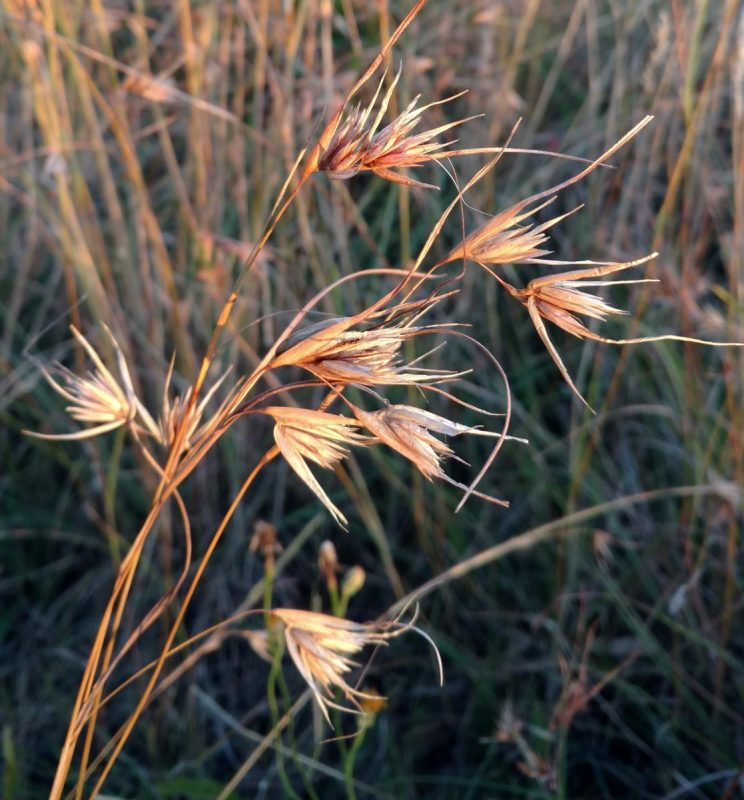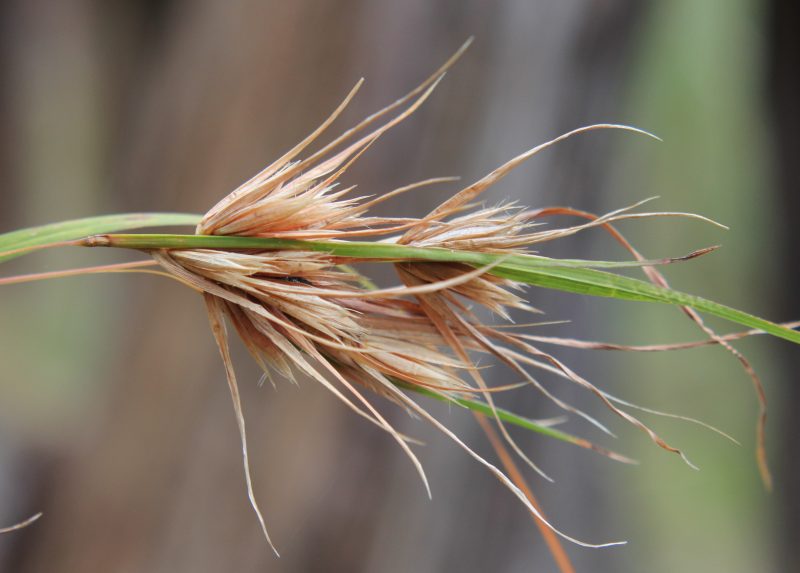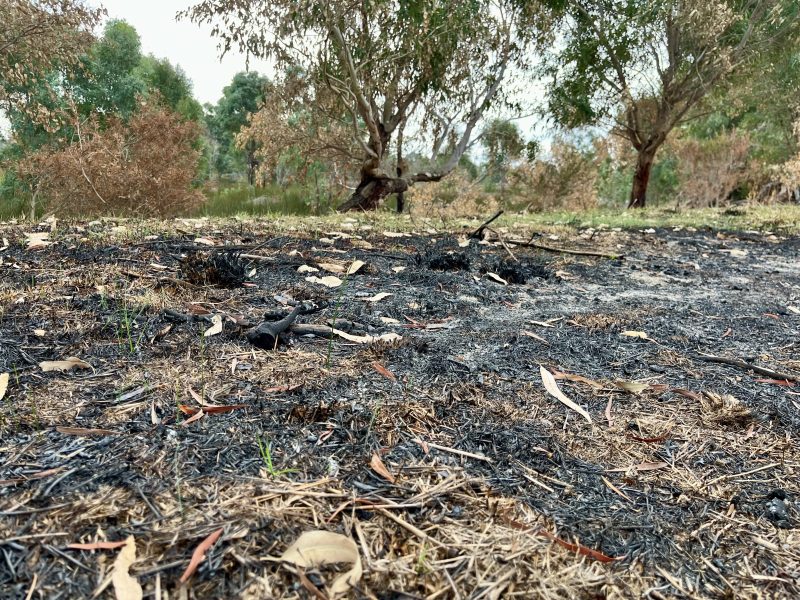Aboriginal Australians have been using fire to manage the environment for thousands, if not tens of thousands, of years. This practice of frequent, cool burns helped to maintain the landscape, encourage new plant growth, and attract animals for hunting. Today, fire practices are often informed by this extensive knowledge and ecological burns aim not only to prevent the occurrence of large bushfires, but also to conserve and restore native fire-adapted ecosystems.
Locally, prescribed ecological burns are undertaken across a variety of parks and reserves, including along the High Country Rail Trail*. These frequent burns result in extensive and high-quality areas of native grasses and groundcovers. In particular, you might have noticed the kangaroo grass (Themeda triandra; pictured), easily recognisable by its characteristic seed heads. This native grass has an important role to play in fire and ecosystem management.


While kangaroo grass is prevalent in many grassy ecosystems across Australia where there is sufficient rainfall, it has been in decline over recent decades. Appropriate fire management helps to maintain kangaroo grass abundance by not allowing woody plants to dominate and create a landscape in which shrubs, herbs, and leaf litter cover the ground. These make prescribed burns difficult as they are less combustible while the soil is moist, however, they burn intensely when dry and lead to more severe fires which can be damaging. In contrast, regular burning of kangaroo grass facilitates fires which are beneficial for the environment because they are of lower-intensity and tend to be patchy, providing both habitat for flora that have differing fire requirements, and cover for fauna. We should aim to conserve kangaroo grass as it has many benefits for the ecosystem, including helping to restore degraded land by conserving moisture in the soil under its dense tufts, preventing erosion with its deep roots, and attracting insects, invertebrates, and other animals, increasing biodiversity.
Another type of burning, important specifically to Aboriginal people is cultural burning. Recently, Duduroa Dhargal Aboriginal Corporation teamed up with the Country Fire Authority to undertake their first cultural burn at Ryans Lagoon. Cultural burns differ from ecological burns in that they are part of Aboriginal Land Management and are a way of practising culture for Aboriginal people. These cultural burns can only be conducted by Aboriginal people.

Parklands Albury Wodonga would like to thank the Country Fire Authority for their ongoing support over many decades in delivering these important land management strategies.
*The High Country Rail Trail will be closed between Ebden and Huon reserves on Saturday 1 and Sunday 2 June 2024.






